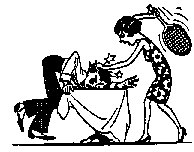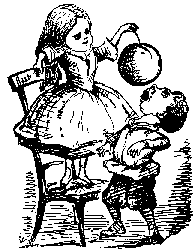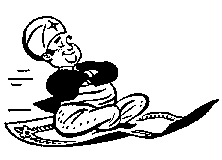

The reason this is such an effective metaphor is the underlying universal theme of dominance and submissiveness.
This metaphor not only allows the righting of things male and female, it also can be altered to include other periphery changes your clients may want. The undercurrents are so strong as to make changing things such as impotence, physical abuse, nail biting, heretical acts, tennis elbow and/or shingles, a breeze.  It's long been a fact that normal men want the women in their lives to slap them around and make them do unmanly things. Fortunately, women want to do this to the men in their lives as well, hence the power for change. Increasing this conduciveness is that these wants are typically hidden from society at large and occasionally from the conscious mind as well. Rarely will you hear a coworker say, "God, I hope John's tired tonight and passes out in the easy chair! I'd love to slip those handcuffs on him and paddle him till he squeals!" Likewise men seldom say, "You know I think I'll knock off early, go home and wash Ruth's cashmere sweater with the car rags on hot so she'll tie me to the kitchen table and thrash my bare bottom with a spatula!" But of course, that is the case.
It's long been a fact that normal men want the women in their lives to slap them around and make them do unmanly things. Fortunately, women want to do this to the men in their lives as well, hence the power for change. Increasing this conduciveness is that these wants are typically hidden from society at large and occasionally from the conscious mind as well. Rarely will you hear a coworker say, "God, I hope John's tired tonight and passes out in the easy chair! I'd love to slip those handcuffs on him and paddle him till he squeals!" Likewise men seldom say, "You know I think I'll knock off early, go home and wash Ruth's cashmere sweater with the car rags on hot so she'll tie me to the kitchen table and thrash my bare bottom with a spatula!" But of course, that is the case.
 In the metaphor, both Bob and Madeline undergo changes. Bob's change is a minimal speech behavior modification and of course the unlocking of his identity, allowing him to become truly centered in his submissiveness. Madeline, on the other hand, went from having the identity of a cheerleader to that of a feminist -- a large jump indeed, requiring the stimulation of millions of neurons formerly in stasis.
In the metaphor, both Bob and Madeline undergo changes. Bob's change is a minimal speech behavior modification and of course the unlocking of his identity, allowing him to become truly centered in his submissiveness. Madeline, on the other hand, went from having the identity of a cheerleader to that of a feminist -- a large jump indeed, requiring the stimulation of millions of neurons formerly in stasis.
 What caused the profound change in Madeline was the sudden realization of the polarity apparent in the relationship with Bob. Bob was dominant; an unnatural state in the male of the species. Her unconscious grasped the significance of the opportunity presented her and swiftly made the changes necessary for the situation to be righted, i.e. the neural shift (the whip was for dramatic effect).
What caused the profound change in Madeline was the sudden realization of the polarity apparent in the relationship with Bob. Bob was dominant; an unnatural state in the male of the species. Her unconscious grasped the significance of the opportunity presented her and swiftly made the changes necessary for the situation to be righted, i.e. the neural shift (the whip was for dramatic effect).

